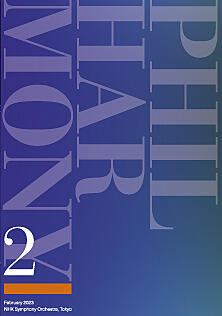- Home
- Concerts
- Subscription Concerts 2022-2023
- Program C
- No. 1978 Subscription (Program C)
No. 1978 Subscription (Program C)
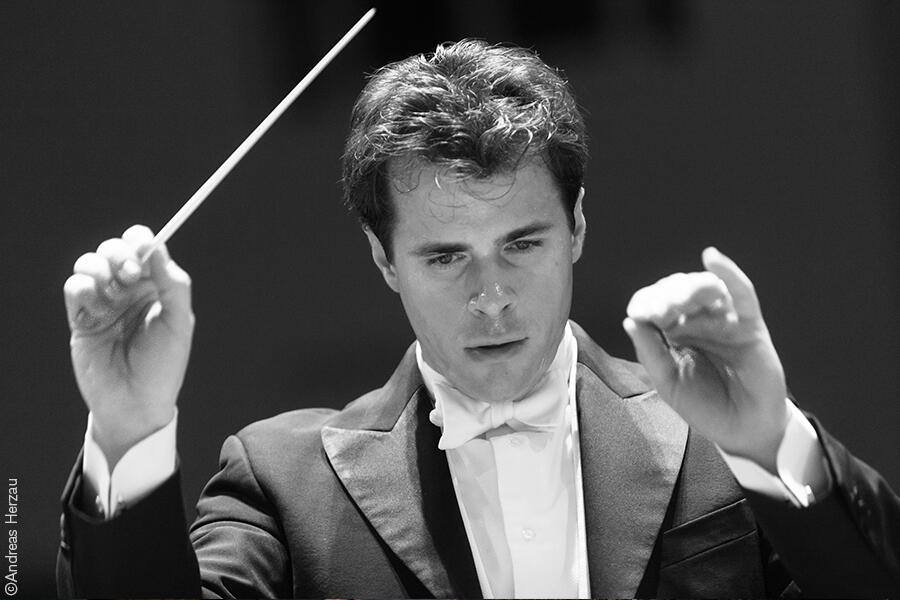
Program
Bernstein / Symphonic Dances from West Side Story
In the 20th-century American music scene, there was no one else with as much charisma and versatility as Bernstein, who was the world's leading composer-conductor-pianist. He was also a dedicated educator and a national TV icon.
Premiered in 1957, West Side Story is one of the composer's best-known works and the biggest Broadway musical hit in history. Retelling Shakespeare's Romeo and Juliet, it is a tragic love story set in modern New York featuring Tony (ex-member of the youth gang, the "Jets") and Maria (sister of the leader of the "Sharks" gang). A great example of Bernstein's musical open-mindedness, his score embraces jazz and Latin music, contains varying rhythms and meters, and makes full use of a multicolored powerful orchestra with a large variety of percussion.
From this score full of immortal tuneful melodies, Bernstein prepared the orchestral suite Symphonic Dances in 1960. Performed without pause, these nine numbers are laid out regardless of the plot. The jazzy Prologue, enlivened by finger clapping and ended with a police whistle, depicts the antagonism between the two gangs. The dreamy Somewhere is to be recalled during Finale. Central two Latin dances, electrifying Mambo and calm Cha-cha, are from the musical's dance scene at a gym where Tony and Maria first meet and dance together. Finale pictures the sorrowful, eternal farewell of the star-crossed couple: Maria kisses dead Tony, and his body is carried by both gangs like a funeral procession.
[Kumiko Nishi]
Rakhmaninov / Symphonic Dances Op. 45
Symphonic Dances, penned in 1940 in the USA, is Rakhmaninov's swan song. Upon completion of it, he foretold that it was presumably his "last sparkle" as he had no energy and fire left in him. And it became a reality when he passed away in California in 1943, a quarter of a century after he bid forever farewell to his beloved motherland ruled by the Soviets.
Although the work was premiered in 1941 as a pure instrumental piece, the Russian composer seemed likely to intend these "Dances" to be real dances with the help of his compatriot Michel Fokine. This legendary dancer and choreographer had created a successful ballet in 1939 using Rakhmaninov's Rhapsody on a Theme of Paganini, however this time the idea didn't come true as Fokine died in 1942.
Rakhmaninov had initially given the three movements of Symphonic Dances the descriptive or possibly figurative titles Midday, Twilight and Midnight that he retracted before the premiere. The first C-minor Dance is in ternary form. Its middle section lets the alto saxophone sing a pensive tune which is known as the first melody Rakhmaninov wrote for the instrument in his life. The coda abruptly cites his Symphony No. 1 (1895) of which the first performance ended in fiasco. The next slower Dance is an eerie, even macabre waltz. The third Dance has a dismal introduction followed by the powerful main section in ternary form. After the two primary themes are heard, Rakhmaninov brings the mortality to mind, making the orchestra repeat the Dies Irae (Day of Wrath) melody from the Catholic Mass for the Dead. He had obsessively quoted this sinister melody in several of his previous works including the above-mentioned Paganini Rhapsody. Then immediately before the coda, he revisits his own choral composition All-Night Vigil (1915) evoking the Resurrection. This final Dance's conclusion is in a state of extreme excitement to end the composer's quasi-autobiographical, quasi-testamentary music.
[Kumiko Nishi]
*This concert will have a duration of 60 to 80 minutes without an interval.
Artists
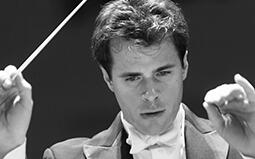 ConductorJakub Hrůša
ConductorJakub Hrůša
Jakub Hrůša has been continuing to expand his career of conducting both orchestral concerts and operatic works by approaching music with a sincere attitude and skillful and passionate conducting. His term as Chief Conductor of the Bamberger Symphoniker has been extended until 2026, while in Britain, his assuming the post of Music Director of the Royal Opera House Covent Garden from the 2025 season has been announced. In the summer of 2022, he conducted Katja Kabanova, an opera by Janáček, at the Salzburg Festival.
He was born in 1981 in Brno, the central city of Moravia, in the Czech Republic, and studied under Jiří Bělohlávek at the Academy of Performing Arts in Prague, and continued further studies with Radomir Eliška. His first visit to Japan was in 2006, and in 2010, he conducted Má Vlast (My Fatherland) at the opening concert of the Prague Spring International Music Festival, and in the same year, he was appointed Chief Guest Conductor of the Tokyo Metropolitan Symphony Orchestra, the post he continued to serve until 2018. He was received warmly when he guest-conducted the Royal Concertgebouw Orchestra in Amsterdam, and also for Janáček’s Makropulos Affair at the Wiener Staatsoper.
He made his subscription concert debut with the Berliner Philharmoniker in 2018 and with the Wiener Philhamoniker in 2019, and also has a strong bond with North American orchestras.
He is currently Chief Conductor of the Bamberger Symphoniker, Chief Guest Conductor of the Czech Philharmonic and L'Orchestra dell’Accademia Nazionale di Santa Cecilia in Rome. He has an extensive discography, and in 2022, his recording of Symphony No.1 by Hans Rott, a genius composer who died young, was released.
His first appearance with the NHK Symphony Orchestra was in 2019 when he conducted the April subscription program A.
[Yoshimichi Okuda, music critic]
Pre-concert Chamber Music Performance
Pre-concert Chamber Music Performance
Program:Tchaikovsky / String Sextet D Minor Op. 70 Souvenir de Florence̶1st Movement
Artists
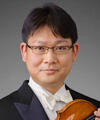
Hiroyuki Matsuda
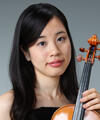
Nana Miyagawa
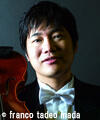
Hironori Nakamura
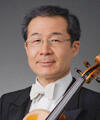
Satoshi Ono
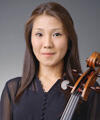
Masako Watanabe
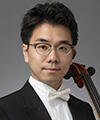
Yukinori Kobatake
Download
Ticket
Program C
No. 1978 Subscription (Program C)
NHK Hall
Google Map
Seating Chart
Single Tickets Release Date
Pre-sales for Subscribers:Thursday, October 27, 2022
*about subscribers
Sale to General Public:Sunday, October 30, 2022
Price
| S | A | B | C | D | E | |
|---|---|---|---|---|---|---|
| Ordinary Ticket | 7,400 | 6,500 | 5,200 | 4,200 | 3,200 | 1,600 |
| Youth Ticket | 3,500 | 3,000 | 2,400 | 1,900 | 1,400 | 800 |
Seating chart Enlarge Print PDF
*tax included
*About Youth tickets (Available at N-Kyo Guide)
*Subscribers receive a 10% discount (Available at NHKSO WEB Ticket and N-Kyo Guide)
*For wheelchair-accessible seats, please refer to the N-Kyo Guide
Starting Dates of Ticket Sales
ANNUAL SUBSCRIPTION TICKETS Mon., July 18, 2022 11:00am
[For Subscribers: Thu., July 14, 2022 11:00am]
SEASONAL SUBSCRIPTION TICKETS (WINTER) Wed., Oct. 19, 2022 11:00am
[For Subscribers: Thu., Oct. 13, 2022 11:00am]
Youth Tickets
Youth Tickets are great options for those of 25 years old and younger
WEB Select 3 Plus
Choose three or more of your favorite concerts and get a discount on single tickets
*Only available at NHKSO WEB Ticket NHKSO WEB Ticket (Accesible from Japan only)
For further information and subscription application
N-Kyo Guide TEL:0570-02-9502
Broadcast
 NHK Educational TVClassical Concert Hall
NHK Educational TVClassical Concert Hall
No. 1978 Subscription (Program C)
Sunday, May 14, 2023 9:00PM - 11:00PM
Program:
Bernstein / Symphonic Dances from West Side Story
Rakhmaninov / Symphonic Dances Op. 45
*This concert will have a duration of 60 to 80 minutes without an interval.
Conductor:Jakub Hrůša
Recorded:February 10, 2023 NHK Hall
To watch a concert,
(accessible only from inside Japan)
(accessible only from inside Japan)

